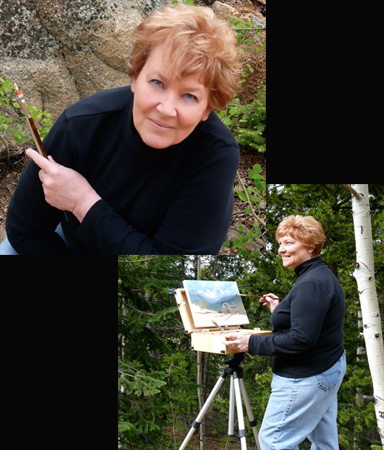The Terminoligy
A Giclée reproduction (pronounced "zhee-klay") is the highest quality print available today. The word Giclée is French for “fine spray”. The Giclee print conotates an elevation in printmaking technology.
The Process
The reproduction process begins with a high-resolution scan of the original oil painting and then printed on a special Giclée printer with archival quality inks. The Giclée is printed with light-fast pigmented inks onto traditional canvas giving the feel, texture and look of an original work of art.
The continuous tone of the Giclée process produces thousands of shades of rich color, creating a blend of art and technology that achieves the intention of the artist more closely than any other means currently available. As a result, the observer views a Fine Art image as vibrant as the original painting. The finished canvas is coated with protective waterproofing and ultra-violet varnish to provide additional protection and durability. Each Giclée canvas reproduction is individually signed and numbered by the artist.
Advantages
Many artists, Melinda included, paint on top of the image after it is stretched, to give it texture and additional highlights and to make each individual piece unique. This is referred to as “hand embellished”.
Digital images can be reproduced to almost any size and onto various media, giving the artist the ability to customize prints for a specific client.
Certificates of Authenticity
Each limited-edition Giclée reproduction is signed and numbered by the artist. A notation that says 7/50 indicates that the reproduction is the seventh in an edition of 50. The annotations "AP" indicate artist proof. The numbering of reproductions is a key issue amongst artists, galleries and collectors. The Giclée is accompanied by a Certificate of Authenticity that serves to authenticate the work for insurance and valuation purposes.
What is the expected life of a Giclée print?
Life-span estimates of wide-gamut pigment ink Gicleés by third party testing indicate over 150 years with no noticeable fade. The most important fact to remember is that all color fades. As far as Giclée prints are concerned, some original watercolors and; most lithographs will fade faster than a well-made Giclée. Unlike lithographs and serigraphs, Giclées have undergone extensive, third party fade testing. While the predicted display life depends on many variables, under typical home or office lighting, and depending on the papers used, Giclées made with wide-gamut pigmented inks are estimated to last over 130 years without noticeable fade. All testing information comes from independent testing labs and the manufacturers of the materials used.
Do Gicleés require special care?
We do recommend that customers treat their Giclée prints the same as they would an original piece of art. If the print has not been coated, it must be protected from moisture by glass. And you should never expose any type of artwork to prolonged sunlight or other harsh conditions. Giclées printed on canvas are treated with an acrylic varnish to aid in their protection, however careful treatment is still desirable.
|
